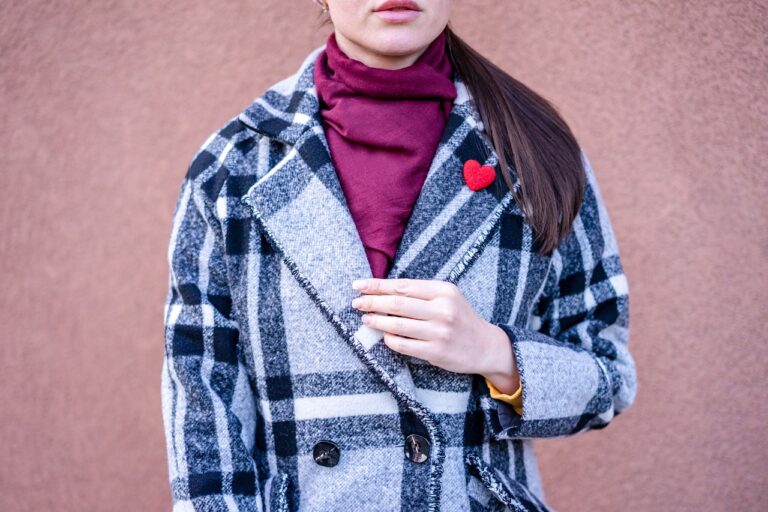Sustainable Fashion: Ethical Choices for a Sustainable Closet
As the fashion industry continues to grow, so does its environmental impact. From water pollution to excessive waste, the negative effects of fast fashion are becoming increasingly evident. However, a growing number of consumers are beginning to prioritize sustainability in their clothing choices, opting for ethically-made garments that do not harm the planet or exploit workers. In this article, we will explore the concept of sustainable fashion and provide tips on how to build a sustainable closet that reflects your values.
What is Sustainable Fashion?
Sustainable fashion, also known as eco-friendly or ethical fashion, refers to clothing and accessories that are designed, produced, and distributed in ways that minimize harm to the environment and respect the rights of workers. This includes using natural, organic, or recycled materials, reducing water and energy usage during production, and ensuring fair wages and safe working conditions for workers.
The Environmental Impact of Fast Fashion
Fast fashion has become the norm in the clothing industry, with retailers churning out new styles at breakneck speed to keep up with constantly changing trends. While this may seem like a great way to stay on top of the latest fashion fads, the environmental consequences are dire. The fashion industry is the second-largest polluter in the world, right behind the oil industry. From toxic chemicals used in textile dyeing to the massive amounts of water wasted in the production process, fast fashion takes a heavy toll on the planet.
How to Build a Sustainable Closet
Building a sustainable closet doesn’t have to be difficult or expensive. By making conscious choices about the clothes you buy and how you care for them, you can reduce your environmental impact and support ethical practices in the fashion industry. Here are some tips to help you get started:
1. Choose Quality Over Quantity
Instead of buying cheaply made, disposable clothing that will fall apart after a few washes, invest in high-quality pieces that will last for years to come. Look for durable materials like organic cotton, linen, or wool, and avoid synthetic fabrics that shed microplastics into the environment.
2. Buy Secondhand or Vintage
One of the most sustainable ways to update your wardrobe is by shopping for secondhand or vintage clothing. Not only does this reduce the demand for new products, but it also gives new life to pre-loved items that might otherwise end up in a landfill. Check out thrift stores, consignment shops, or online marketplaces for unique and affordable finds.
3. Support Ethical Brands
When shopping for new clothing, look for brands that are committed to sustainable and ethical practices. This includes using eco-friendly materials, paying fair wages to workers, and minimizing waste in the production process. Do your research and support companies that align with your values.
4. Take Care of Your Clothes
Extend the life of your clothing by following care instructions carefully and avoiding excessive washing or dry cleaning. Mend or alter clothes that are damaged or no longer fit, rather than throwing them away. By treating your clothes with care, you can reduce your consumption and minimize waste.
5. Embrace Minimalism
Instead of constantly chasing the latest trends, focus on building a versatile, timeless wardrobe that reflects your personal style. By curating a collection of essential pieces that can be mixed and matched in different ways, you can reduce the need for constantly buying new clothes and create a more sustainable closet.
6. Educate Yourself
Stay informed about the environmental and social issues facing the fashion industry, and advocate for positive change. Read up on the impact of fast fashion, learn about sustainable alternatives, and support initiatives that promote transparency and accountability in the clothing supply chain.
FAQs
Q: What are some popular sustainable fashion brands?
A: Some popular sustainable fashion brands include Patagonia, Eileen Fisher, Stella McCartney, and Everlane.
Q: How can I tell if a brand is truly sustainable?
A: Look for certifications like Fair Trade, GOTS, or B Corp, which indicate that a brand meets certain environmental and ethical standards. You can also research a brand’s supply chain practices and transparency efforts to get a better sense of their commitment to sustainability.
Q: Is sustainable fashion more expensive?
A: While some sustainable fashion brands may have higher price points due to their commitment to ethical practices and quality materials, there are also many affordable options available, such as secondhand clothing or budget-friendly eco-friendly brands.
Q: How can I recycle old clothes responsibly?
A: Many clothing retailers offer recycling programs to help you dispose of old clothes responsibly. You can also donate gently used items to charity or repurpose them into new garments or household items.
By making small changes to your shopping habits and embracing a more mindful approach to fashion, you can build a sustainable closet that reflects your values and contributes to a cleaner, healthier planet. Choose quality over quantity, support ethical brands, and take care of your clothes to reduce your environmental impact and promote positive change in the fashion industry.







